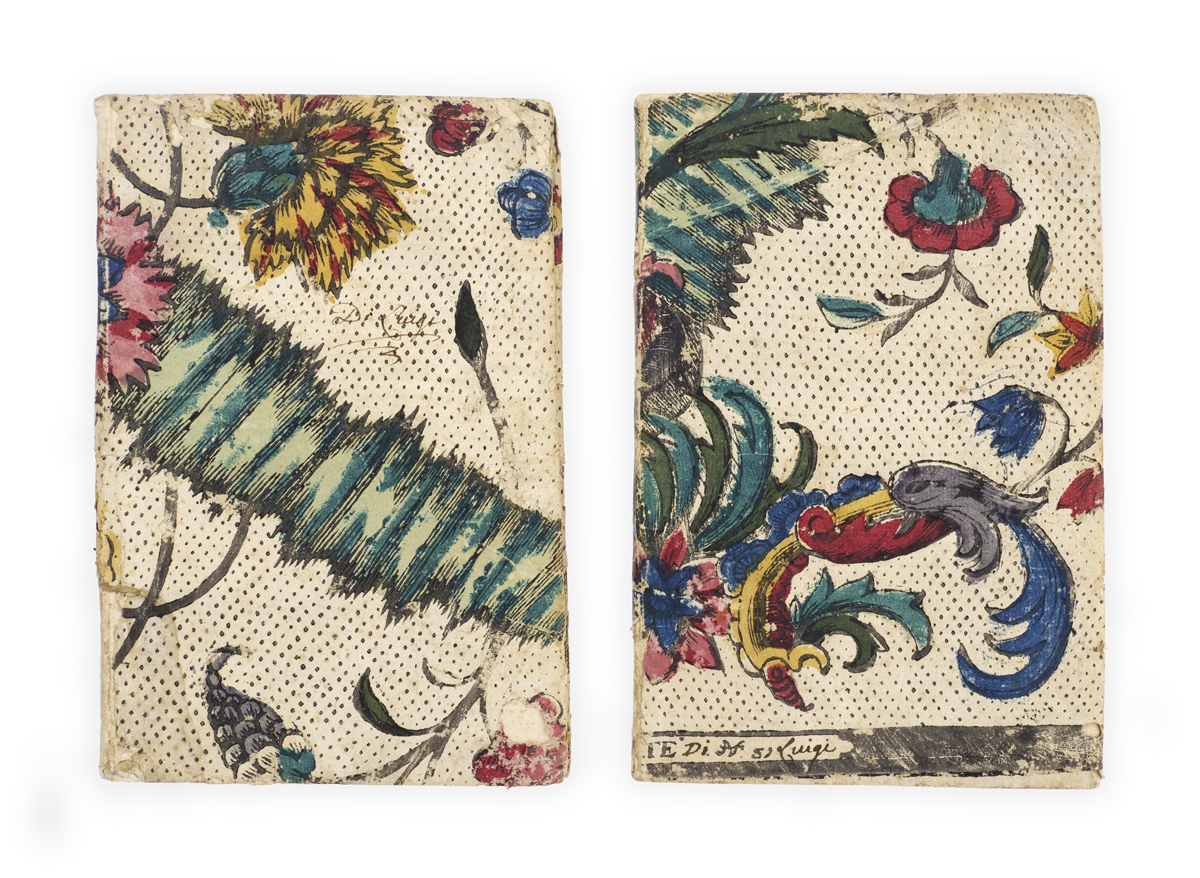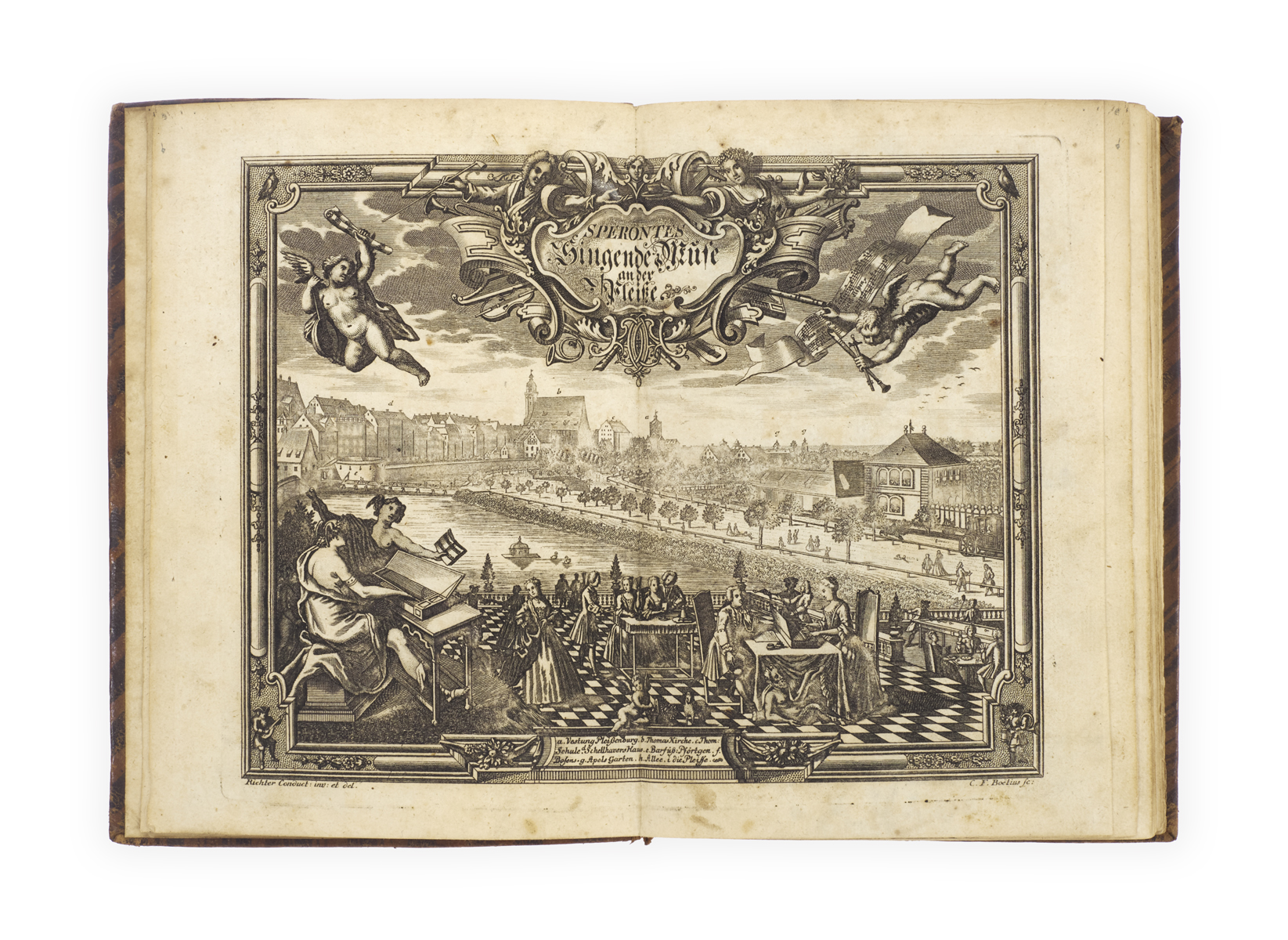

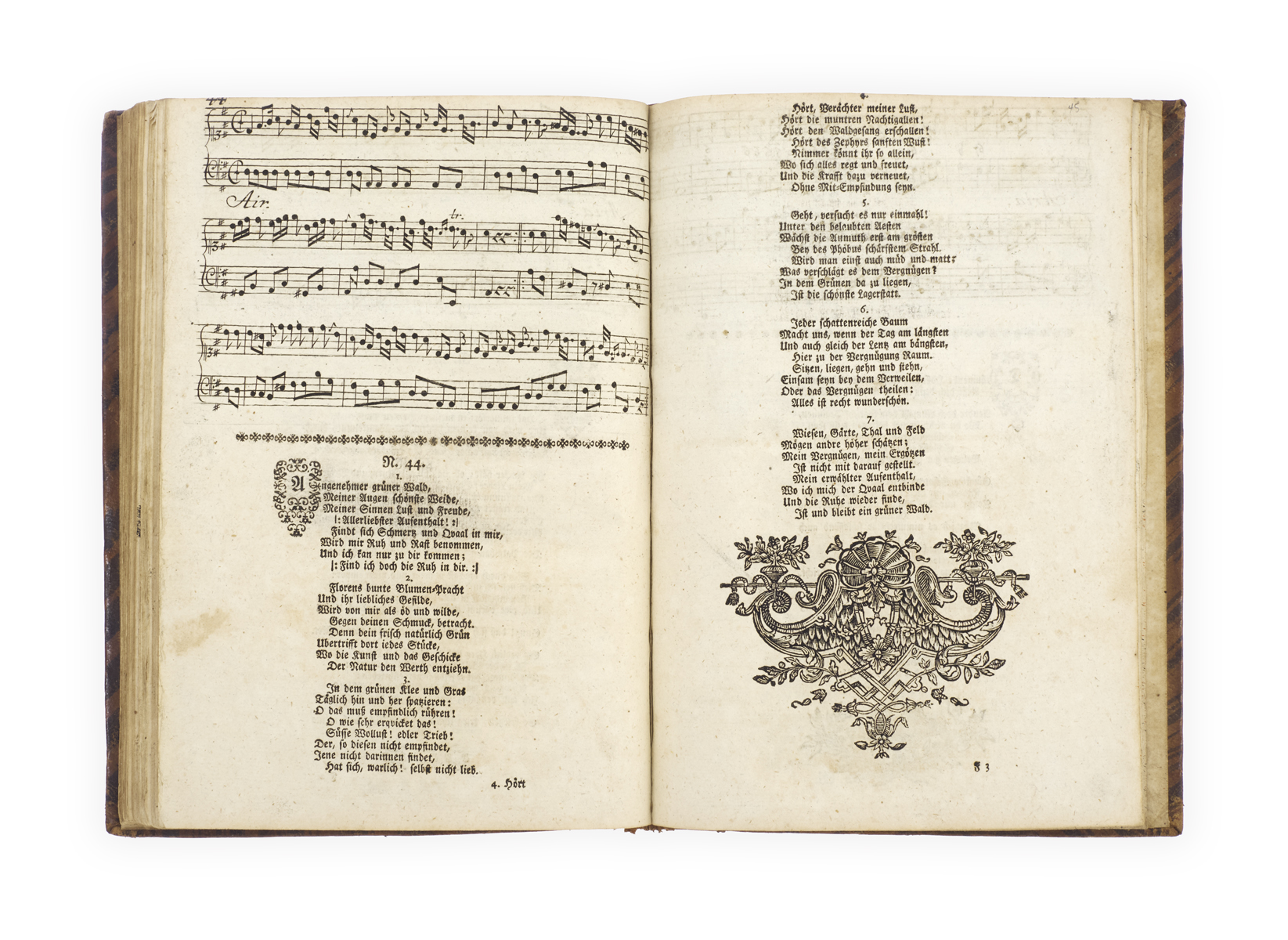
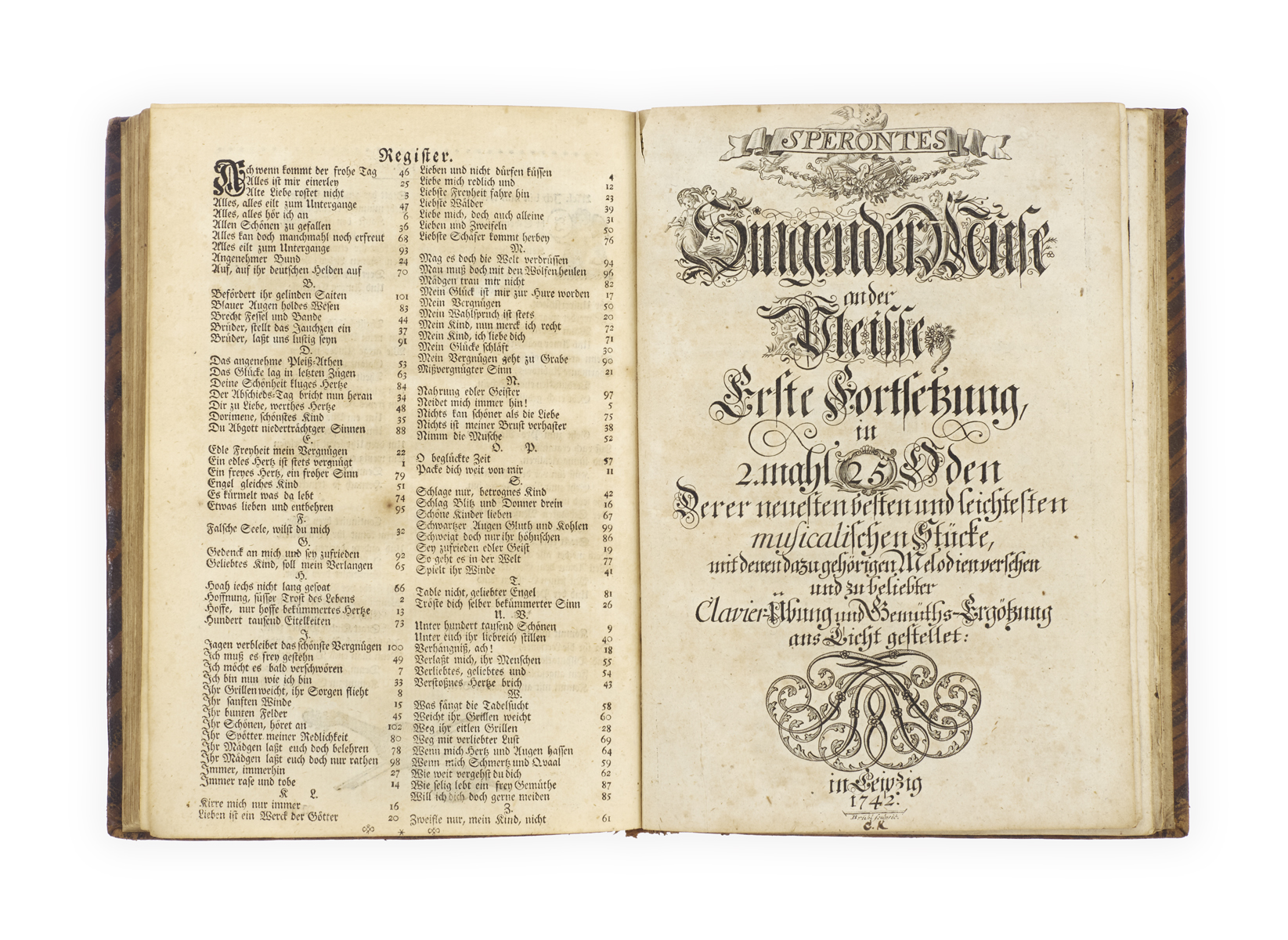
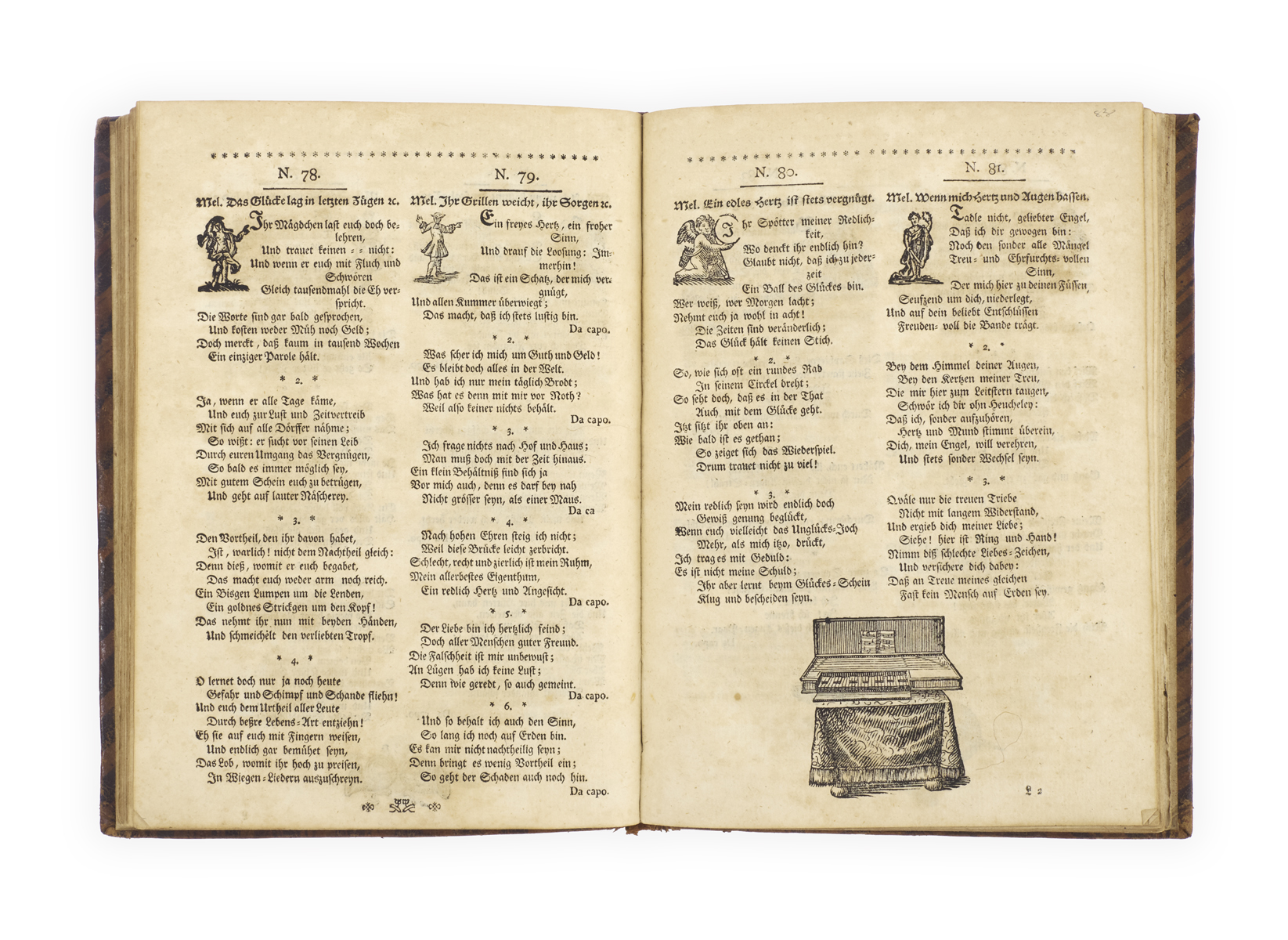
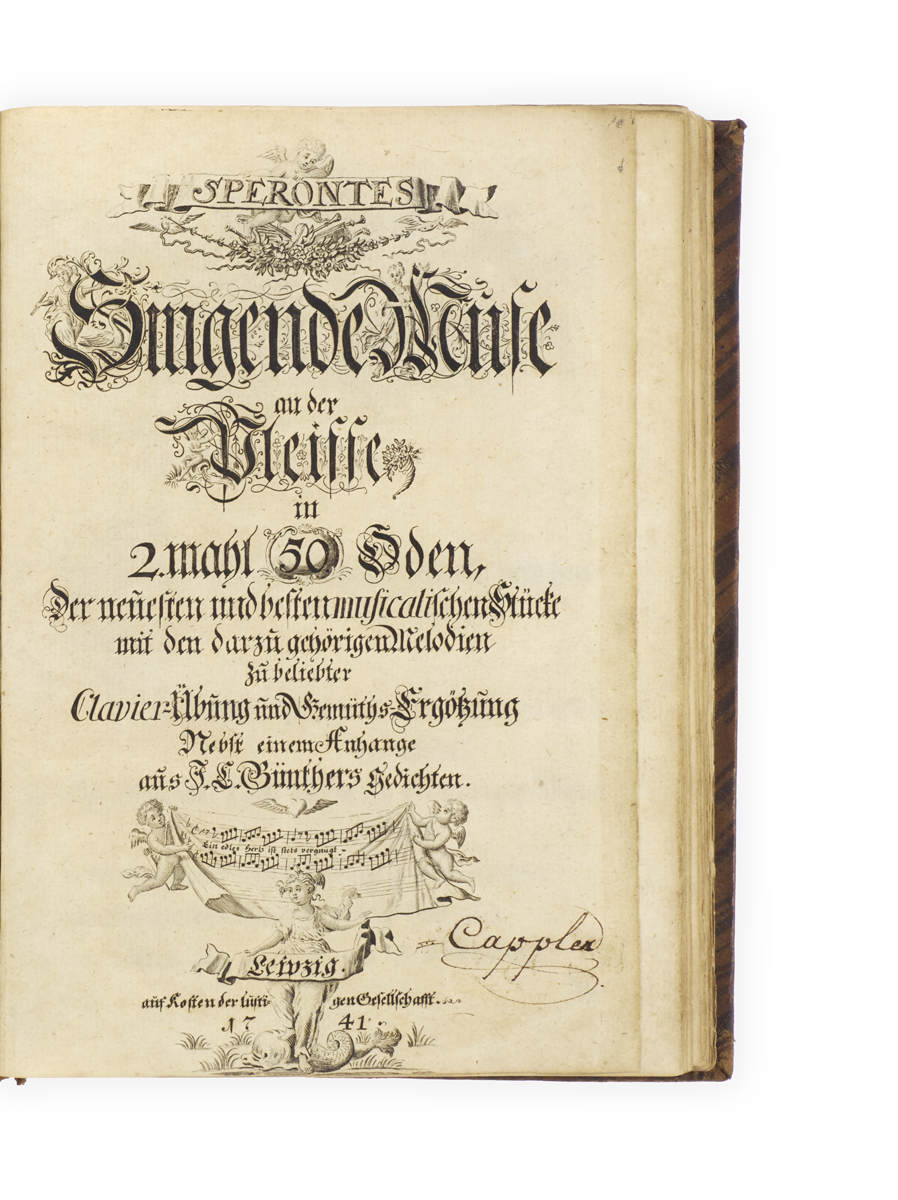
[SCHOLZE, Johann Sigismund.]
Sperontes singende Muse an der Pleisse in 2 mahl 50 Oden, der neuesten und besten musicalische Stücke mit den darzu gehörigen Melodien zu beliebter Clavier-Übung und Gemüths-Ergötzung nebst einem Anhange aus J. J. Günthers Gedichter.
Leipzig, auf kosten der lüstigen Gesellschaft [Breitkopf], 1741.
[Bound with:]
—. Sperontes singende Muse an der Pleisse, erste Forsetzung, in 2 mahl 25 Oden … Leipzig, [Breitkopf,] 1742.
Two parts bound together, 4to, pp. [4], ‘68’ [i.e. 76], [24], with an engraved title-page and folding double-page frontispiece (a view of Leipzig re-used from the first edition of 1736); [2], ‘50’ [i.e. 52], [2 (index)], with an engraved title-page; each song with engraved music at the head and letterpress verse below (songs 69-102 in the first work are printed without music); woodcut head- and tailpieces, woodcut vignettes or initials (in 1742 the initials are made of printer’s tools); a fine copy in contemporary speckled sheep, covers and spine ruled in blind.

Added to your basket:
Sperontes singende Muse an der Pleisse in 2 mahl 50 Oden, der neuesten und besten musicalische Stücke mit den darzu gehörigen Melodien zu beliebter Clavier-Übung und Gemüths-Ergötzung nebst einem Anhange aus J. J. Günthers Gedichter.
Second edition of the first part, first edition of the second part – a hugely influential collection of German songs that laid the groundwork for the Romantic Lied. ‘Its engraved titles, imprinted notes and numerous charming woodcut vignettes make this one of the age’s most delightful creations of book art’ (Mannheimer cat. 5, 1398). Two further parts appeared in 1743 and 1745.
‘Sperontes’ was only identified in the nineteenth-century as Johann Sigismund Scholze (1705–1750), of Leipzig, a poet and anthologist in the circle of Gottsched. ‘Sperontes’s most significant work is the Singende Muse an der Pleisse, a collection of poems set as strophic songs to adaptations of the “newest and best music compositions” … The initial publication of 1736, containing 100 poems (and 68 compositions), proved to be so popular that it was followed by three further sets with 50 numbers each’ (Grove online).
‘The Singende Muse clearly fulfilled a need among the emerging German middle classes. The deliberately unpretentious poetry affirmed their values and sympathetically depicted their everyday activities. The texts extol variously the virtues of patience, constancy, love, friendship, moderation and hope, and recount the delights of country and city life, the seasons, billiards, keyboard and card playing, tobacco, coffee and tea … The music of the Singende Muse consists overwhelmingly of popular pre-existing instrumental and vocal compositions to which Sperontes invented his verses … For the most part Sperontes seems to have drawn on French, but also on English, German and Italian, musical sources.’ In the first collection No. 33 ‘Ich bin nun, wie ich bin’, and No. 48 ‘Dir di Liebe, werthes Hertze’ are ascribed to J.S. Bach (BWV Anh. 40 and 41).
‘The remarkable success of Sperontes’s anthology initiated almost immediately a powerful resurgence of song production which was to continue throughout the century, forming the matrix for the lieder masterpieces of the 19th-century Romantics’ (ibid.).
RISM II, p. 372; Hirsch III, 1078; Hayn/G. IV, 128 (‘Enormously rare!’).

